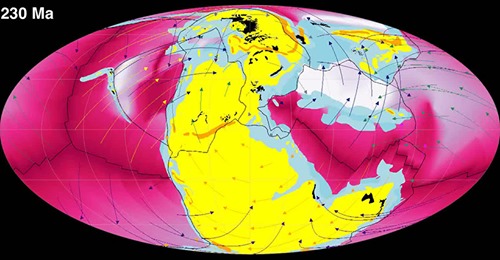
Christian Fogerty, writing for American Geophysical Union (AGU)’s EoS magazine, reviews some of our work on modelling and visualising Earth’s deep carbon cycle. We started our exciting journey with the Deep Carbon Observatory (DCO) in 2015, and these projects have laid the foundations of a lot of exciting future work. Importantly, the team behind the Deep Carbon Observatory worked hard to raise the profile of students and Early Career Researchers, and established best-practices of inclusion and diversity in Earth sciences.
“The carbon cycle is at the heart of Earth’s planetary evolution. We see it manifest at all scales, through new crust forming along mid-ocean ridges, eruptions circling the Ring of Fire, and coral reefs shining along continental shelves. It is as fundamental to our understanding of Earth as those foundational processes we learn about in grade school, like photosynthesis and the water cycle. The carbon cycle, quite literally, shapes the world around us. But its impacts, like most geologic processes, take place on timescales that are difficult for us to fathom.”
None of the work was possible without the incredible, generous, and enthusiastic support of the Alfred P. Sloan Foundation. This research is made possible by the generous and long-term funding of GPlates software development by the Australian Government (NCRIS) via AuScope (AuScope.org.au). The research has already been incorporated into our teaching within the School of Geosciences, University of Sydney, and the open-access and open-source tools and technology have been rolled out to the broader (science) community.
To have a full read of the publication click here.
There are too many people to thank for their support over the last 5 years, so we send our gratitude and love to our “DCO Family”.
![]()
